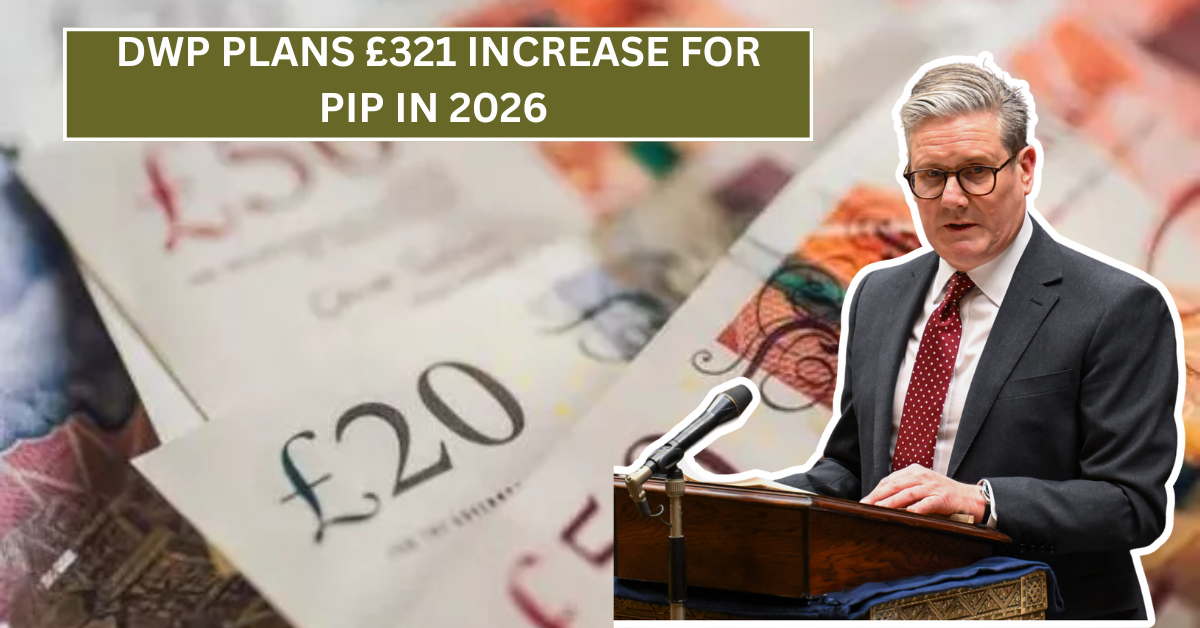Good news for those receiving Personal Independence Payment (PIP) from the Department for Work and Pensions (DWP). Starting from April 2026, the weekly enhanced daily-living component of PIP is set to increase by 3.4%, meaning people could get an extra £321 over the course of a year. This rise is part of the UK government’s annual benefits uprating to help keep up with inflation and the cost of living.
For many claimants relying on PIP to manage daily living costs due to disabilities or health conditions, this payment boost comes as a significant relief. Understanding how this change affects your finances and what the new rates mean can help you plan better for the future. Let’s explore the details behind this increase and what it means for PIP recipients.
What is Personal Independence Payment (PIP)?
Personal Independence Payment (PIP) is a benefit provided by the UK government to help disabled people with extra costs caused by long-term health problems or disabilities. It is not means-tested, which means your income or savings do not affect your eligibility. PIP is designed to support those who need help with daily tasks or getting around.
PIP has two parts: the daily living component, which helps with activities like cooking, washing, and managing money, and the mobility component, which helps with moving around. The amount you get depends on how your disability affects your life, not the condition itself.
What Does the 3.4% Uprating Mean?
The government reviews benefit rates every year to keep them aligned with inflation and rising living costs. The 3.4% uprating is a percentage increase applied to certain benefits, including PIP. In this case, it raises the enhanced daily-living component rate from its previous amount to £113.85 per week starting in April 2026.
This increase means recipients will receive more money weekly, which adds up over 12 months. For the enhanced daily-living component, the total annual increase comes to about £321. This can provide extra financial support for those managing the challenges of disabilities or health conditions.
Who Benefits from the Increase?
This payment increase will mainly benefit people who receive the enhanced daily-living component of PIP. To qualify for the enhanced rate, a person must need a higher level of help with everyday tasks. Many recipients fall into this category because of severe disabilities or long-term conditions that require substantial support.
Those who receive the standard rate or the mobility component of PIP may also see smaller increases, but the main focus of this uprating is the enhanced daily living rate. It is essential for claimants to check their current benefit amounts and future changes to understand their new payment level.
How Will This Affect Your Budget?
An extra £321 a year might not seem like a huge amount, but for many families and individuals, any additional financial help goes a long way. It can help cover medical expenses, mobility aids, extra care, or everyday costs like food and utilities.
For younger readers or those managing their own money for the first time, it’s a good idea to think about how this extra income can make a difference. Budgeting with the updated amount means you can plan ahead better and reduce financial stress.
When Will the Changes Take Effect?
The new PIP payment rates will start from April 2026. The government sets these upratings annually, usually announced before April, allowing recipients and advisors time to prepare and adjust. It’s important to stay updated with official DWP announcements or trusted news sources to know exactly when payments will increase.
Remember, you don’t need to apply again if you already receive PIP. The changes will happen automatically, and your payment will reflect the increased amount on the relevant payment date after April 2026.
How to Check Your PIP Payment Amount
You can check your current PIP payment amount by logging into your “Personal Independence Payment” account online through the UK government’s website. This will show your current components and rates. After April 2026, your payment should automatically update, but it’s helpful to stay informed.
If you believe your condition has changed or your needs have increased, you can also request a review of your PIP claim. Make sure to keep all your medical documents updated and speak with a healthcare professional if needed.
What If You Need More Help?
In addition to PIP, there are other benefits and support schemes available for people with disabilities or health conditions in the UK. These include Disability Living Allowance (DLA) for children, Employment and Support Allowance (ESA), and housing benefits.
If you feel overwhelmed or unsure about your benefits or how to claim them, you can contact advice services such as Citizens Advice or local disability charities. They can help explain your options, assist with filling out forms, and guide you through appeals if necessary.
Conclusion: What This Increase Means for You
The planned 3.4% increase to the enhanced daily-living component of PIP is good news for many people relying on DWP payments to support their daily lives. An extra £321 per year starting April 2026 can make a meaningful difference in managing costs related to disability or long-term health conditions.
By staying informed and understanding how these changes affect your finances, you can use this extra support wisely. If you’re new to benefits or need assistance, reaching out to support services can help ensure you get all the help you deserve.




